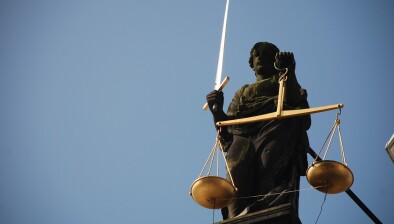Dr Grant Barclay: Corroboration case is Lord Carloway’s magnum opus
Dr Grant Barclay
Great changes are being wrought in Scotland’s law of evidence. Dr Grant Barclay, early career fellow in evidence and criminal law at Edinburgh Law School, looks at the full bench decision in HMA v PG and JM.
“Having to apply rules, which prohibit a judge or jury from reaching a just conclusion based upon a liberal consideration of all relevant testimony, hinders the justice system.” The parenthesis is either doing a lot of heavy lifting in this statement made by Lord Carloway or it represents a Freudian slip, one which is admittedly much closer to the surface than these kinds of revelations tend to be.
For in many ways the recent nine-judge decision in HMA v PG and JM [2024] HCJAC 43 is Lord Carloway’s magnum opus – the man who has declared he will retire as lord president and lord justice general in 2025 has in one sense accomplished what he set out to achieve when he initially wrote in 2011 that the corroboration rule should be abolished.
Hyperbolic language aside, this case does represent the culmination of several precedents overseen by Lord Carloway which look to narrow the scope of corroboration in cases involving sexual offences. As many will recall, the landmark reference case last year determined that distress, previously regarded as only being useful for determining the credibility and reliability of the complainant’s testimony, is in fact capable of corroborating that testimony, thereby overcoming what is often seen as an insurmountable hurdle of satisfying the corroboration rule in sexual offences cases.
In Wednesday’s ruling, the court considered some follow-up questions that naturally flowed from the previous judgment that a recent statement made under distress could corroborate the complainer’s account that a rape had taken place. Indeed, if one could use a previous statement by the complainer made to another to corroborate that complainer’s account, did it need to be delivered under distress? And what, precisely, could that statement corroborate: just the act, or the identification of the accused as the perpetrator too?
Giving some indication as to the prevalence of these issues in bringing such cases to court, it is probably noteworthy that Lord Advocate Dorothy Bain KC did not have to wait very long to find the appropriate test cases required to make these follow up references to the High Court (one of the cases was heard just a month after the first reference ruling was delivered).
In this week’s judgment, the court returned a verdict confirming that a statement from the complainer sans distress would suffice provided it is ‘recent’, and that there was no reason why such a statement could not (in appropriate circumstances) corroborate both the occurrence of the crime and the identity of the perpetrator, although there was some pushback from Lady Paton on this latter point who feared this ruling would erode the ability of the corroboration rule to act as an effective safeguard against the risks of mistaken identity.
What would make such a statement ‘recent’? Lord Carloway states that the statement should be understood in the context of the commission of the crime, as well as the opportunities a complainer has had to confide in a trusted person, but ultimately it appears that this will be a matter of fact, to be determined by the circumstances of each individual case.
There is a laudable aim behind this ruling, based on an opinion which has gained strength through associated research that a lack of visible signs of distress cannot be itself determinative of whether a person has suffered trauma (in this context, rape). It should not, therefore, be the case that a complainer must act in a certain way to be considered a victim to secure justice.
Rather, courts must consider whether the statement was made recently and to a confidante, with the emphasis being placed on the desire to exclude from the ambit of de recenti statements anything which can be construed as concocted “following time for reflection, distortion, and the like”. In relation to using de recenti statements as corroborative evidence of identification, Lady Dorrian emphasised that this was the natural result of the previous reference, as it would be “utterly illogical to treat some of what a complainer said as corroborative… but some as lacking that quality”.
Lord Carloway, perhaps in an effort to deflect scorn from those practitioners and academics who thought corroboration was fine as it was, seems to have achieved his aim primarily through reference to legal history: don’t blame me, this is just an accurate reading of Dickson.
It’s not clear quite how accurate this position is though. The court suggests that res gestae is a separate entity from statements and other aspects observed de recenti, but that’s not my reading of the very same sources relied upon. Dickson makes it quite clear that, generally speaking, res gestae requires a close connection between the thing said or done which is being relied upon for corroboration of a crucial fact and the commission of the offence itself.
However, in cases of sexual offending, and due to their peculiar nature (which I can only read to refer to the fact that they occur in the private sphere), the res gestae can be extended to include de recenti statements and/or distress. Why the court felt it necessary to separate de recenti from res gestae in the first place is slightly baffling, given that seemingly nothing turns on this distinction in practical terms (particularly given that this ruling states that de recenti statements can corroborate), and the separation only stands to usurp Lord Carloway’s reasoning from less than a year ago where he made it quite clear in the previous reference that they are, in fact, related.
Turning to Lady Paton’s comments about the problems associated with allowing de recenti statements to corroborate the identification of the perpetrator, these rather suggest that she may have a more general issue with the idea that de recenti statements can be an extrinsic source. In her judgment she gives an example of a petrol station employee who is victim to a robbery, and who alone details the circumstances of the offence and mistakenly identifies a local man as the culprit.
“The only source who actually saw the robber’s face was [the employee]”, she tells us, but surely this statement is also true of the commission of the offence? After the first reference I also had some preliminary difficulties with the idea that a statement from the complainer (rather than the demeanour with which it is delivered: i.e., the distress) can truly be regarded as an extrinsic source of evidence, but it seems clear to me that either the statement can be used to corroborate all or none of the facts, and this is very much the approach taken by the other judges who disagreed with Lady Paton’s dissent.
Lord Pentland in particular drew on the fact that no such distinction on the corroborative value of res gestae evidence is drawn as Lady Paton proposes it should be for de recenti statements. This once again raises the question of why the court seemed to be at pains to treat de recenti as a separate concept from res gestae, when the comparison seems to be doing strong evaluative work.
It will be interesting to see what further rules emerge out of these seismic decisions in the Scots criminal law of evidence, particularly in relation to Lord Carloway’s comments about the rule against hearsay perhaps needing further review, but those hoping for an uptick in convictions for rape should probably not hold their breath.








